Introduction
Marketing is the process through which consumers’ requirements and wishes are identified and then applied for preparing that particular product or service, taking into account its scope or loopholes. This notion applies to all types of marketing, but when we talk about rural marketing India, the emphasis broadens to rural regions.
In view of this, many businesses are now shifting to the rural markets, extending their scope, overcoming or restarting rivalry, or shaping competition by focusing on the rural marketing strategies, rural marketing campaigns, digital marketing strategy, mobile marketing consulting services, and others. When it comes to Rural markets, much attention needs to be paid to rural touchpoints of India as they are the ‘markets of the future.’
Rural markets have a high capacity to generate a huge volume of sales for the companies by having an active supply chain management. The rural Marketers should have the focus on the 4 A’s, namely Acceptability, Affordability, Awareness, and Accessibility along with the strategies for the product pricing distribution, promotion.
Rural consumers are fundamentally different from their urban counterparts in the way they speak different languages and dialects, have low levels of literacy, and limited purchasing power. Further, there are regional variations in their tastes, habits, and customs and they have limited access to modern media of communication that the marketers have to keep in mind. All this calls for a new approach to rural marketing. Moreover, the rural market touchpoints are very much important for the marketers to
- To gain the recognition of their products thus offering them unique needs through simple and entertaining marketing.
- To include and learn via nontraditional media for a digital marketing consulting that conveys consistent messages across multiple channels.
- To have a consideration defining an irresistible value proposition that looks beyond pricing as a long-term source of differentiation, especially for products categories that are new to rural consumers.
- To provide validation by identifying and engaging the most relevant influencers for targeted consumer segments to strengthen trust through word of mouth.
- To offer expert advisory and differentiated services to improve the in-store experience increasing the purchase expectations.
- To offer a better consumer service across the purchasing journey until consumed to maintain loyalty well beyond the point of transaction.
Through this, we want to educate the readers and marketers about the areas or touchpoints that they can’t afford to miss in their rural marketing initiatives.
Haats
A haat bazaar, also known as a हाट or a haat, is an open-air market in rural areas that acts as a trading location for villagers. It is a local market where people from various places congregate to purchase and sell things. People gathered to trade goods and services for money. The vendors do not have pre-arranged shops on standby.
India has about 47,000 haats, the majority of which are held on a weekly basis. These bazaars are held on a regular basis, such as once, twice, or three times a week, or every two weeks in some regions. Haat bazaars are sometimes structured in a unique way to encourage or promote rural people’s trading.
A haat is a better place to promote than to develop a brand. Bargain hunters are more likely to recall a product or brand because of its low price than because of its image or positioning. Haats provide a perfect setting for product displays and even sampling because of the enormous captive audience. In the village economy, haats are quite important. The majority of haats are held once a week, with an average of 300 stalls and sales exceeding Rs. 2 lakh per haat day.

Melas
Mela is an important aspect of rural culture. It is not only a time for people to get together and enjoy themselves, but it is also a time for cultural blending and exchange. Melas have been seen as a fundamental part of social interaction for ages. From little melas held in every hamlet, where the main attraction is a religious site, to large events such as the Kumbh Melas, there is something for everyone.
Mela in rural areas is one of the best ways for targeting audiences from rural areas and small villages and it allows and permits the visibility to the smallest of brands that exist in the market being a first copy of the original or the same packaged altered name brand. Marketing initiatives implemented during large mela events have shown to be enormously successful in the past, according to research and surveys. Also, people belonging to diverse groups attend these melas and those too who belong to all age groups and socioeconomic status categories which helps in covering a lot of potential audiences to be targeted, being cost-effective and having higher chances of sales conversion leading to word of mouth marketing again in the small village areas.
Mela Marketing is more economical than the other competition in the market. The melas’ infrastructure and advertising expenditures are quite minimal, making them financially viable for businesses.

Chaupal meetings
It is the focal point of village life, particularly for male residents. A chaupal can be a basic raised platform shaded by a huge tree, such as a neem, banyan, or pipal fig tree, in tiny settlements. The chaupal in larger villages may be a more complex structure that also serves as a community guesthouse. The village chaupal is where panchayats (village administrative bodies) normally meet and hold hearings and people gather to read newspapers, watch television, discuss their joys and sorrows, celebrate festivals, and so on.
Mandis
In Hindi, the word “mandi” means “market area.” Traditionally, such markets were used to sell food and agricultural products. As a result, the word mandi takes on the shape of a general market where everything can be purchased and sold. Mandis are an important part of the people’s life-support infrastructure in a predominantly rural India.
In India, there are around 7600 mandis that give a platform for farmers to engage. These regular wholesale markets, often known as ‘Mandis,’ provide a fixed location for daily trading. Their labor begins early in the morning and continues until all transactions are completed.
These markets are typically found in cities, districts, and major trade hubs. They are usually dense hubs of economic, social, and political activity, connecting and shaping relationships between town and countryside, as well as between local commodity markets and broader, national, and global capital and commerce circuits.
Co-operative societies
Rural product marketing attracted a lot of attention in the broad marketing framework during the period from 1960 to 1990. This increase can be attributed to the establishment of agencies such as the Khadi and Village Industries Commission, Girijan Cooperative Societies, APCO Fabrics, IFFCO, KRIBHCO, and others, as well as the government’s special attention dedicated to the promotion of these products. A voluntary partnership of agricultural producers for the combined selling off their excess products is known as a cooperative sale society or cooperative marketing. It’s a system in which a group of farmers pool their resources and work together to complete some or all of the marketing process of their agricultural produce. These cooperative societies eliminate middlemen and strengthen the competitive position of their members in order to secure a favorable market for their products. It aggregates individual members’ output. Cooperative societies provide a variety of marketing services, such as transportation, packaging, and warehousing, in order to sell the product at the best possible price.
Common service centers
The main concern was the lack of understanding in rural regions that preferred digital marketing to older and more conservation approaches. Rural marketing agencies were not very knowledgeable. CSC helps to remedy this same problem through its programmers to help every person have access to and support digital infrastructure. CSCs also provide promotional and advertising solutions in rural regions by delivering both infrastructure, IT, and branding services.
Thus, this becomes a point of access for a public who is digitally aware of the facts free of charge and who gives a platform above all.
People who come to CSC are typically prepared to learn digitally, which implies that instead of running from it they welcome changes. This kind of public is essential to creating a brand in the rural areas since they are sensitive and willing to talk or try out a new brand.
The center is also regularly visited by villages, providing companies with exposure and visibility. The creation of temporary buildings or banners in the center may affect brand awareness positively. PCO and Western Union or XPress cash counters are instances of planned product placements and intelligent publicity because the pull strategy does not entail it.
The project should be aimed at generating, stimulating and advancing the digital revolution which opens up the digital marketing track to rural marketing services.
Panchayat offices
Since the time when Model Panchayats have been introduced in the village development system model, rural marketing is being carried out at a faster pace due to the increased access of the brands and companies that marketed their products even in the cities and metropolitan cities like Delhi, etc. these model panchayats have increased the access and allowed the corporate companies to enter into the rural markets launch down their products for serving the products and services.
District centers-
These are rural municipalities whose major purpose is to administer and offer government services. These centers may include a secondary school, a health clinic, and a market area that serves as a district assembly point. A bus stop and a number of permanent shops are frequently linked with the market area.
Trade fairs-
Fairs are an important element of rural life. They are a source of pleasure for the rural population as well as a solid chance for marketers in the rural market to advertise their products. It has a wide appeal since many peasants attend fairs. Another critical aspect is the employment of bright colors in the company’s booths. This entices the crowd to purchase the merchandise.
Customers may be drawn in by employing mass media to organize folk song competitions, folk dances, magic performances, puppetry performances, street theatre, acrobatic talents, jugglers, and so on.
Krishi agri mela-
Krishi Agri mela can be the most capture point for rural marketers. Directly they can showcase their products and services in the form of an exhibition. Mostly agri related organizations represent their new technologies and low-priced model to get their product diversification among all the crowd. The mela would be acting as the point of attraction for all the rural people to get to know different new products and services apart from those existing in their village. So, such melas would also provide a number of leads at one place without reaching each and everyone in the village in a one-to-one meet.
Aanganwadis[sc7]
In Hindi Anganwadi means “courtyard shelter”. Aanganwadi centers provide supplementary nutrition, non-formal pre-school education, nutrition, and health education, as well as vaccinations, health check-up, and referral services, the last three of which are given in collaboration with public health systems. They are also in charge of providing important health information and keeping proper figures of vital beneficiary data, health status updates, and supply inventory beneficiaries. In India, there are 1.3 million Anganwadi centers and more than 2.3 million Anganwadi workers (AWW) and Anganwadi Helpers (AWH). The officials and their assistants are typically poor women from disadvantaged households. In India, Anganwadi workers are the initial point of contact between organized health care and rural India’s impoverished.
Anganwadi has been the most frequent touchpoints to the rural marketing companies in India in the villages and remote areas especially for the companies which are related to the women and child care healthcare domain e.g.: ITC P&G.
NGO offices
One of the major touchpoints for rural marketing is the NGO offices in the villages which are usually meant for development purposes but these days because of the model panchayat system and the 73rd Amendment, Even the companies are taking the help of the NGOs for promoting their products via awareness campaigns, induction programs, entrepreneurship training programs, etc due to which they are even able to do the CSR activities and hence also are promoting themselves along with the portrayal of the product to the public which turns out to be an act of marketing with a social cause.
Whatsapp marketing groups
WhatsApp dominates the communication channels of digital and social media in India. Over the last year, the proportion of WhatsApp users in rural India has twice declined, with data cost decreasing and internet utilization rising. More than 38 percent of rural India spend one to two hours in different surveys according to different statistics.
Companies of rural areas can learn and enhance the way of marketing and hence increase the sales via WhatsApp groups be it pharmaceutical, grocery, medical, Corporates can learn from the villagers who at the individual level have their WhatsApp groups for selling vegetables, fruits, toys and some other products like homemade soaps and phenyl using the self-help group model under the model panchayat setup. This can be done only with the availability of data and an easy smartphone facility.
Therefore as mobile data prices continue to remain cheap and handsets inexpensive, rural WhatsApp and other social media platforms will continue to increase in the near future by the use of marketing channels as touchpoints for rural marketing.

Gramotsavam event
Every village has some kind of a marketing event where the companies can focus on a wider audience for their product promotion, usually, every Panchayat of the village has many social religious functions and fairs in some season or annually or on any special occasion as planned by the village panchayats or gram sabhas. The companies also try to contact the village panchayats via the pradhans and sarpanch for allowing them access to the rural market for the introduction of their products to be made aware to the general public of the village and hence create a pool of the audience for conversion of the product marketing or sales.
Agri societies
Agricultural societies occupy niches of market development and integrate them into the overall system of capitalism. They help in changing the preferences, habits, and characters of their members and thereby trigger economic development and social reform. They even manage to exploit local intellect over costly production factors. Also, Cooperatives help in easing the pooling of resources and the buildup of unity among them. Moreover, they establish a class of local entrepreneurs and allow this class to remain independent
Agricultural societies also play an important role in the production, primary processing, and selling of agricultural and animal commodities. The justification for agricultural societies stems from their potential for profit maximization, harnessing various skills among members, increasing advocacy and bargaining power, improving financial availability, boosting social capital, increased competitiveness, providing access to education, improving market access, and contributing to poverty reduction.
Schools/College/Universities-
Schools/Colleges/Universities act as major congregation points in rural areas. These educational institutions have a good potential to attract a major population of rural areas. As the large infrastructure and area space help, marketers conduct and present their products or services in front of a wider audience group. College/universities/schools also act as a familiar place to attract the youth and middle-aged population as it binds an emotional connection with them. This age group also have a greater tendency to understand and capture the essence of products or services with better market knowledge, so it becomes easy for marketers to showcase and sell their products in these touchpoints can be of great importance for rural marketers to capture and enter into the grass-root level of the society. It can be a great touch-point for the newcomers into the rural market as they can have a large crowd to advertise and make them aware of their different new products. Being educated the students would easily differentiate the pros & cons of any product & service of the organization. Through these students, they can easily distribute their products and bring them to the notice of the rural people.
Agricultural Production and Marketing Information Centre
In the marketing of agricultural products, market knowledge is critical. Farmers would be able to achieve a better price for their products by relocating their products to a market that pays more if the information on commodity pricing in other marketplaces was made public. Agricultural Production and Marketing Information Centres have been established at a cost of Rs.45.00 lakhs in 14 Regulated Markets including Dindigul, Alangudi, Madurai.
These centers were outfitted with computers and peripherals, as well as internet connection and electronic display boards. The arrival of agricultural produce, pricing data, and post-harvest management methods in controlled marketplaces are shown on electronic display boards for the benefit of farmers.
Conclusion:
Therefore, the following touchpoints can guide and channelize the marketers to thrive in the market as per their target groups.
These touchpoints have been helpful for the villages in creating self-reliant villages that are capable of attracting giant business groups into the remotest rural areas, simultaneously increasing the representation and participation of the rural population.
Rural markets and rural marketing involve a number of strategies that can be used in the touchpoint areas to help them enhance their efficiency and effectiveness which include:
- Client and location-specific promotion
- Joint or cooperative promotion.
- Bundling of inputs
- Management of demand
- Developmental marketing
- Unique selling proposition (USP)
- Extension services
- Business ethics
- Partnership for sustainability
These various touchpoints present in different forms are capable of attracting and influencing different target groups (i.e male, female, youth, workers, etc). Marketers need to have profound research and keen understanding of these touchpoints in order to understand the needs and demands of a particular market segment which will ultimately amplify their market base and revenue generation.
Ascent has a unique team of digital marketing services in India that provide digital marketing and brand consultants, mobile marketing solutions, social media marketing strategies in order to design and lead a market approach for the companies by identifying their target audience, respective touchpoints, and their behavioral and consumption pattern.
Lastly, India’s rural market is one of the fastest developing markets and hence the marketers should approach the touchpoints with a long-term perspective and should have the patience to achieve the desired results.





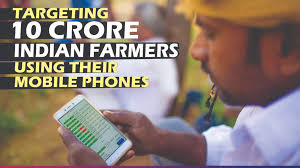
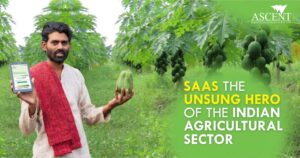



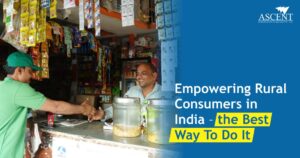

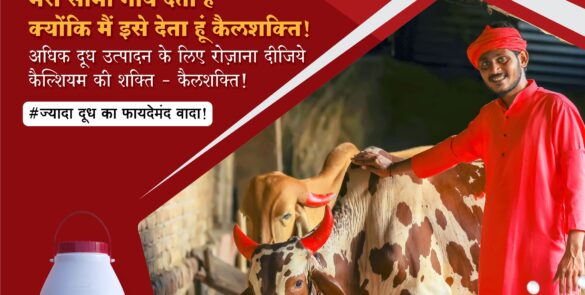
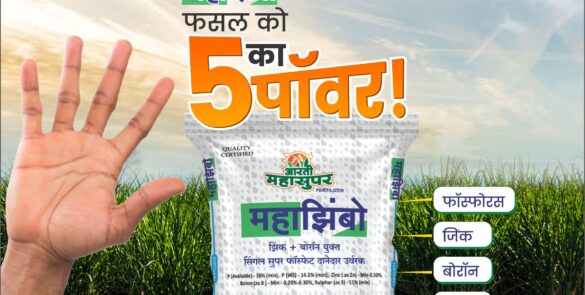
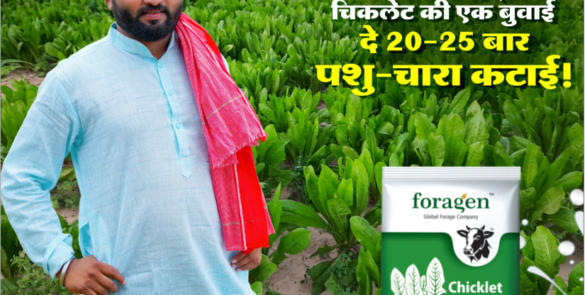
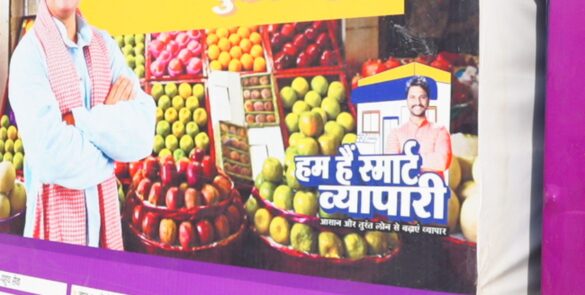


2 Responses